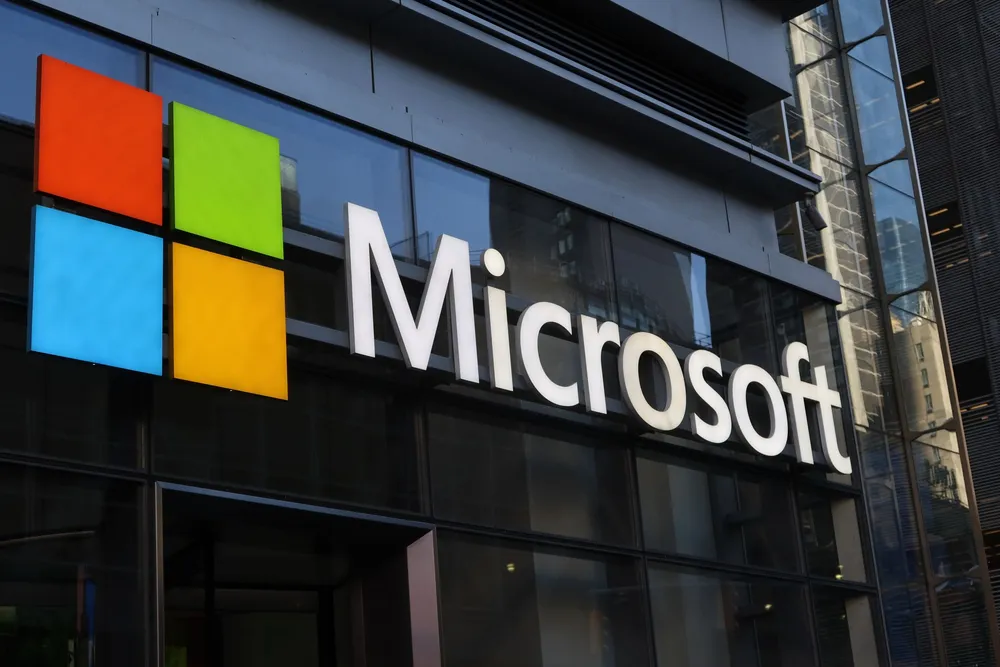Microsoft plan to turn wind farms into mini AI data centres: 'massive power opportunity'
Research team at tech giant claims 'AI Greenferencing' can bypass grid issues by tapping cheap wind power at source

A team at tech giant Microsoft wants wind farms to be turned into mini-AI data centres by locating computing hardware at operating projects, setting out why wind power is better suited to the task than solar or nuclear.
Researchers at the global tech giant claimed “wind farms represent a massive, underutilised power opportunity” as they set out proposals to deploy “compute clusters” at projects.
The modular data centre equipment would tap power to carry out inferencing tasks – the crucial step at which power-hungry AI models make decisions based on real-world inputs.
The initiative, called AI Greenferencing, “brings AI compute to wind energy sources, bypassing power delivery challenges and meeting rising AI demand sustainably” according to a paper published by the Microsoft team.
“Running AI at the power source eases grid stress, addressing interconnection queues, curtailment, T&D loss, and sustainability,” they argue, adding that the plan is a “win-win” for wind farm owners who get a new revenue stream and AI providers who get access to additional, cost-competitive power.
The researchers claim inferencing workload and wind generation have crucial elements in common – both are “variable but predictable” within key parameters, in the case of wind at 15-minute intervals.
Central to the Microsoft plan would be Heron, a software tool designed to route AI inference requests to wind farm compute clusters, taking account of “power availability, hardware constraints, network latency, and workload patterns”.
With the help of Heron, inference workload could be intelligently deployed around multiple wind sites, said the team, which modelled a group of four wind farms in Iceland, Norway, Switzerland, and the UK with a total peak capacity of 250MW.
Cost saving potential
Using tried and tested modular data centre equipment on unused land at wind farms means the Capex for a Greenferencing deployment should be no higher than for a traditional data centre, the Microsoft team reckons, while Opex could be lowered “if wind farm employees/operators are trained to perform basic data centre maintenance activities”.
On cost of power, the researchers expect “significant reductions” by tapping wind power at source compared to rates paid under PPA agreements, for example. The paper says: “This lower cost is actually an upper bound for the cost of power at its source than via grid. Curtailed power is anyway wasted and is virtually free.”
The crucial equipment to be used under the Greenferencing plan is graphics processing units (GPUs) made by the likes of NVIDIA. The Microsoft team calculates that by “right sizing” the computing hardware comfortably below peak output, availability for inferencing tasks is available most of the time.
The Greenferencing paper states that some 6.7 million NVIDIA GPUs could feasibly be deployed at wind farms already operating and close enough to AI demand centres to meet the data sector’s technical requirements.
The Microsoft team said it may in future look at other potential clean power sources for its computing tasks – but flagged potential issues.
“Solar farms face [roughly] 50% unavailability, requiring costly battery/generator backup, increasing Capex and Opex,” it noted.
Nuclear, while offering stable baseload, presents challenges of public acceptability, it added.
'Greenferencing offers fascinating paradox'
“But we also know that our power grids are facing significant challenges, with the scaling up of our grids and updating of our existing networks to ease congestion and bottlenecking requiring time, effort, policies and money to ensure due progress can be made,” said Faiz.
“AI Greenferencing provides us with a fascinating paradox, whereby AI will actually be run at the power source to overcome said challenges - delivering the very solutions that will ultimately help the energy sector to manage future complexity whilst meeting AI demands in constrained regions.”
(Copyright)